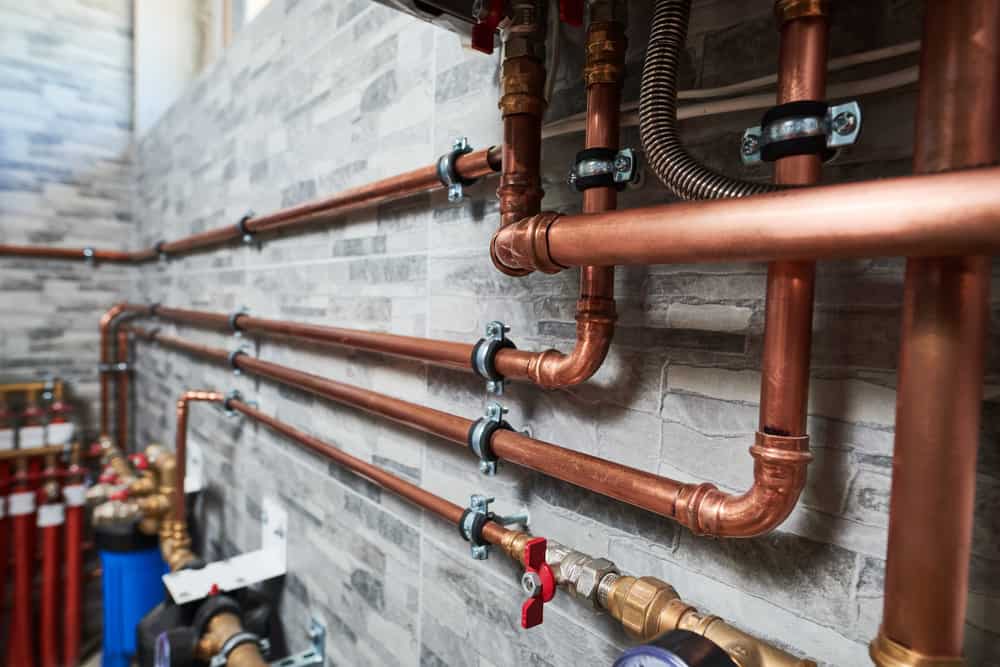Your home’s water supply system can be typically riddled with an array of problems such as leakages, degraded water quality, low pressure, and the like. Among the water supply issues you might encounter is backflow and it’s crucial to understand what it is and why you should prevent it.
What’s Backflow
Typically, water should flow only in one direction, from the supply network to your faucets and other user points. Under no circumstance should water be drawn from the taps into the supply pipes. However, this can happen if the pressure at the pipe’s end increases significantly, causing the suction of water into the pipes.
And that’s the reason why you must install a water backflow prevention device. You’d want to contact a reliable plumber to advise you on how to go about it if you don’t have one installed.
The backflow preventer is a valve that allows water to flow in only one direction. It’s usually installed near the main control valves, with a pedestal emerging from the ground to release backflowing water. When water attempts to flow back from the taps into the supply network, the valve closes, forcing the water to spew through the release pipe.

Why You Need A Backflow Preventer
With that understanding, here’s why you must install a backflow prevention system:
1. To Safeguard Water Safety
Your drinking water supply system should be extremely clean to ensure the consumers don’t ingest harmful substances. Suppose you have a flower or vegetable garden and irrigate it with water from the municipal pipe network. If water flows back from the irrigation pipes into the mains, many harmful substances will be drawn in there.
First and foremost, the garden soil is typically laden with nitrate- and phosphate-rich fertilizers, pesticides, and herbicides. These agricultural products are poisonous if ingested. They can cause diarrhea, nausea, vomiting, blurred vision, skin irritation, acute gastrointestinal distress, headaches, dizziness, seizures, and drowsiness. Secondly, if your garden receives water from the septic system for drainage into the ground, you risk contaminating the clean water supply with deadly bacteria.
Another typical source of backflow is the swimming pool. You agree that water from the pool isn’t healthy at all. It carries excretion matter, bacteria from saliva, contaminants from swimwear, cosmetics, and skin tissue. These contaminants can cause critical illnesses if they find their way into drinking water.
The same is true with water from household appliances like washing machines. Pressure differences may result in dirty water full of cleaning solutions getting into the municipal water supply system. Luckily there are helpful devices like a backflow prevention system that you can use.
2. To Avoid Repairs
Foreign materials within your pipes aren’t the best thing. Some may be corrosive, accelerating the wearing out of your pipes. Soon, the conduits will have several leakages, which are costly to repair. If backflows continue unchecked for a while, the damage to the network may be widespread, necessitating a complete replacement.
A buildup of foreign matter within your pipes may also block the free flow of water, resulting in reduced pressure at the outlets. And it’s usually irritating to wait so long for a bucket to fill up. All these could be avoided by installing effective backflow preventers.
3. To Comply With Local Laws
Some municipalities make it mandatory for all homes to install a backflow preventer. Failure to have one means your home pipe system won’t be certified for use, which may lead to a series of legal issues if you insist on using it that way. The authorities can refuse to supply water to your home because you’re non-compliant.
Frankly, staying without water is one of the last things you’d wish for your household. Thus, it pays to follow the rules and avoid such predicaments.
4. To Keep Peace With Neighbors
In most cases, the water pipes coming into your home branch off from municipal mains, which also supply water to other homes in your neighborhood.
When there’s backflow, the entire pipe network may get affected. The contaminants aren’t restricted to your home though. They may find their way into neighbors’ taps, wreaking havoc in several other households. If they trace the contamination source to your home, the cordial relationship you’ve been enjoying may turn sour.
Conclusion
Backflow prevention is a vital component of the plumbing system. It primarily prevents the entry of contaminants into the water supply network. It’s also a requirement by law to have these devices at your home.
So, make a point of installing one if you haven’t already done so. For guaranteed results, it helps to work with professional plumbers. If you’re looking for a professional in the Rochester and Finger Lakes Region of New York, you’ll find them at FindTheHomePros.com. The goal is to keep your family and neighbors safe from harm.

Recent Comments